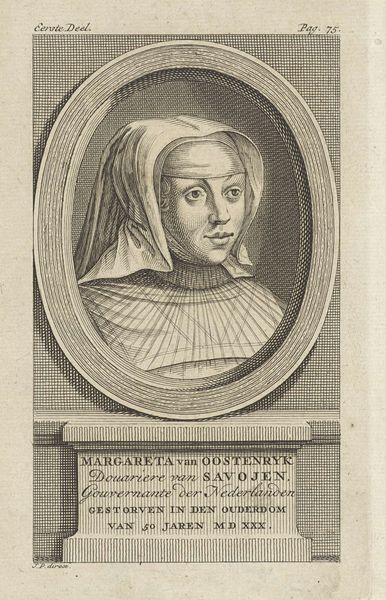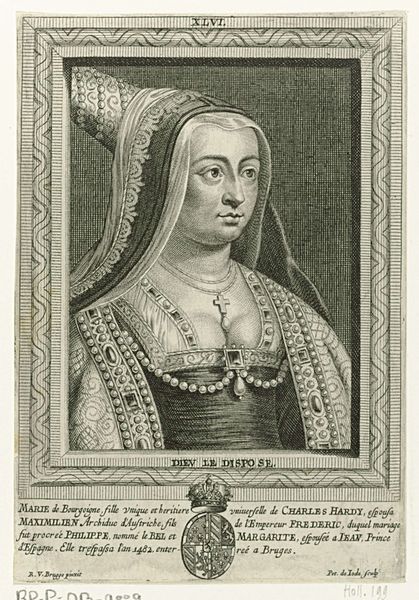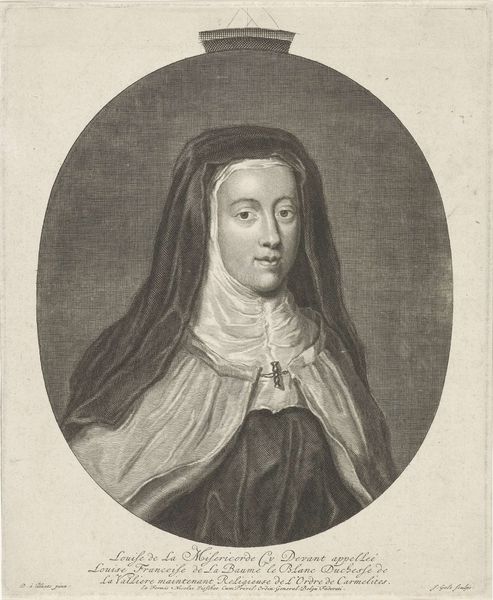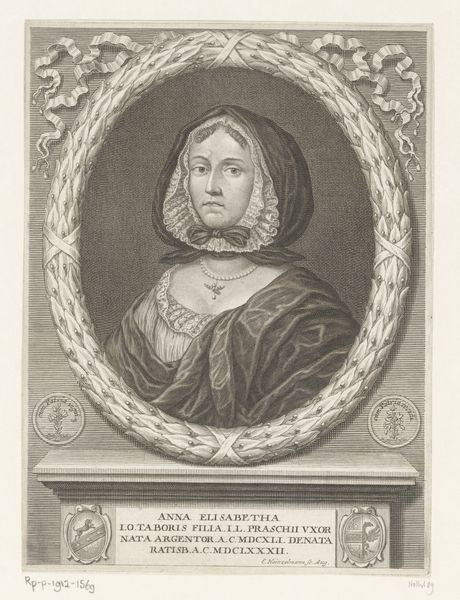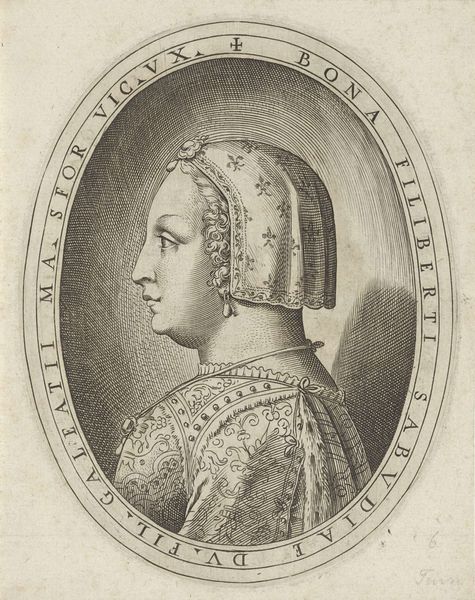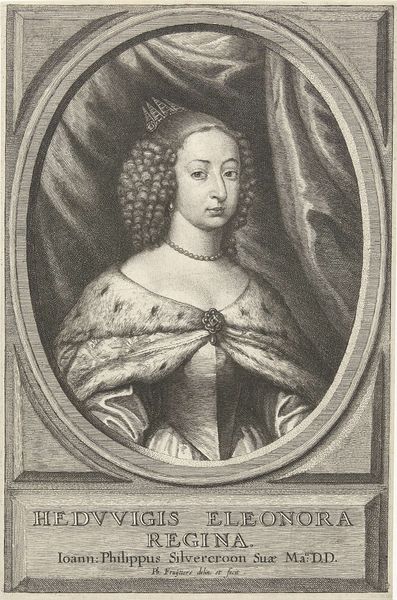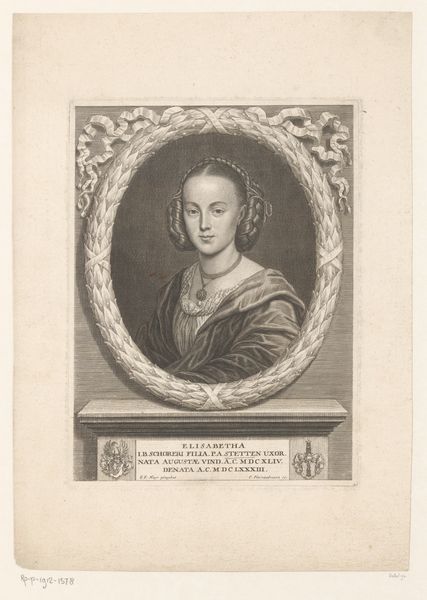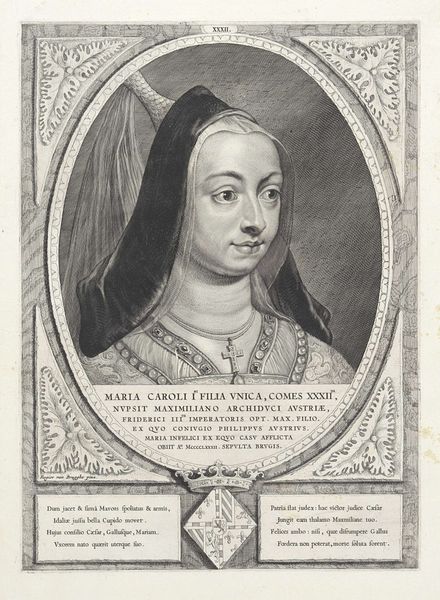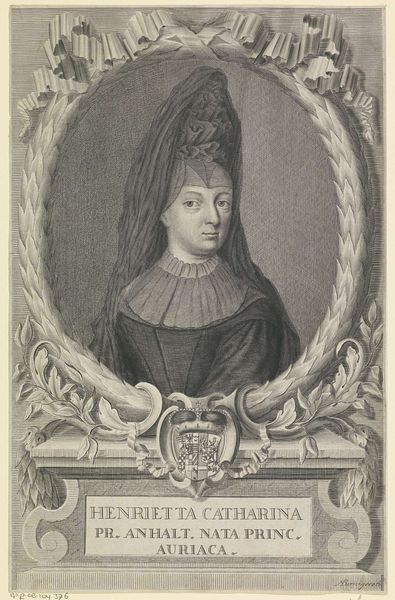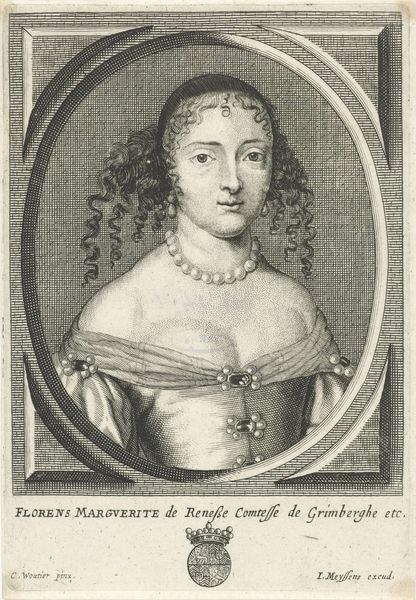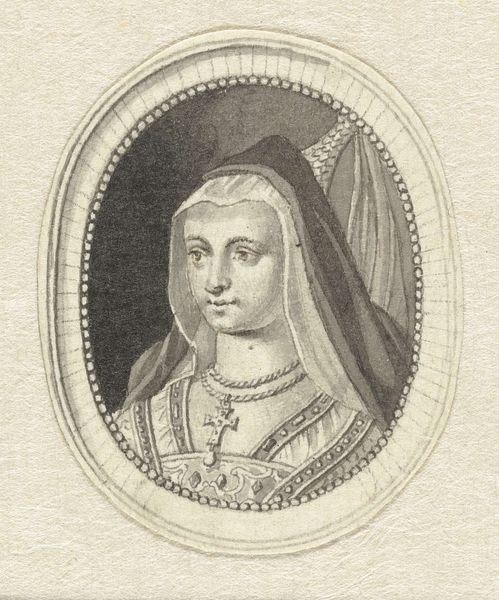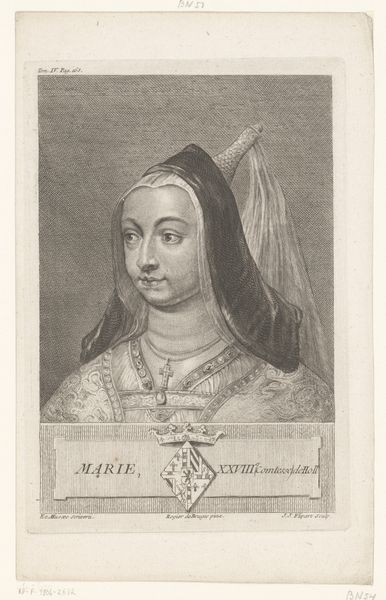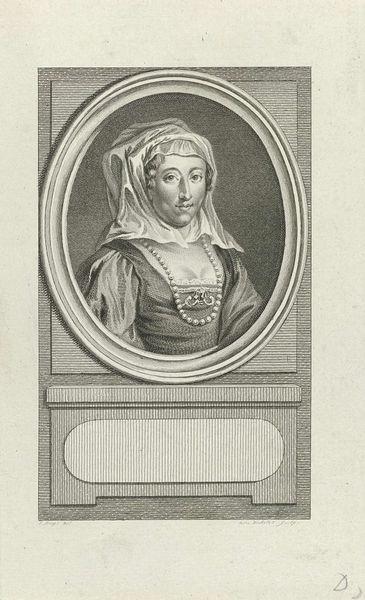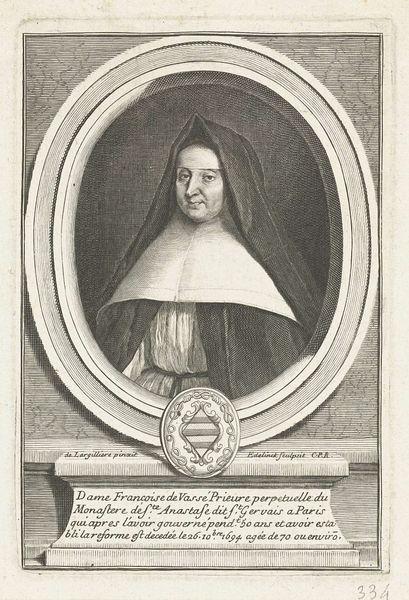
print, paper, engraving
#
portrait
#
neoclacissism
# print
#
old engraving style
#
paper
#
history-painting
#
engraving
Dimensions: height 181 mm, width 111 mm
Copyright: Rijks Museum: Open Domain
Curator: Here we have Jan Punt's 1786 engraving, "Portret van Maria, hertogin van Bourgondië," or "Portrait of Mary, Duchess of Burgundy." Editor: My initial impression is one of stillness. The fine lines create a soft, almost melancholic feel. There's an elegance but also something quite rigid in the portrait’s formality. Curator: As a print, it embodies the democratizing potential of reproducible art. Jan Punt, as the engraver, takes on a key role. The labour involved in creating these incredibly detailed lines by hand across a metal plate demonstrates an intricate and skillful craft. We shouldn’t underestimate the time spent by an artisan painstakingly recreating her likeness. Editor: Exactly. This image exists because someone desired a visual representation, a marker of power and nobility that connects back to complex social systems. And to see the words "Maria van Valois..." just beneath, the visual and the textual working together… it brings to mind questions around female inheritance and societal expectation in the 15th Century. How does she embody ideals, and to what extent did her actual lived experience meet the legend surrounding her? Curator: The lines themselves tell a story – the texture of the paper, the variations in ink density, those slight imperfections. These aren't accidents; they represent a particular mode of production that gives this artwork its unique identity and reflects both a skilled engraver, a demanding print market, and an artform transitioning into mechanical processes. Editor: And in the context of Neoclassicism, this formal portrayal aims to embody that era's values of rationality and order, harking back to earlier eras, while this representation is itself based on previous representations of a female leader—it's an iteration, but the core is status. One wonders about the intended audience; about class, and about this duchess as the symbol of an aspirational society. Curator: Well, for me it is the artistry combined with function that is of interest. And I’m reminded of all of the various people involved, and labor needed, to bring this single print to life. Editor: Seeing Maria rendered in such detail, caught in time, frozen forever, reminds us of our continual role in negotiating visibility, power, and identity, then and now.
Comments
No comments
Be the first to comment and join the conversation on the ultimate creative platform.
